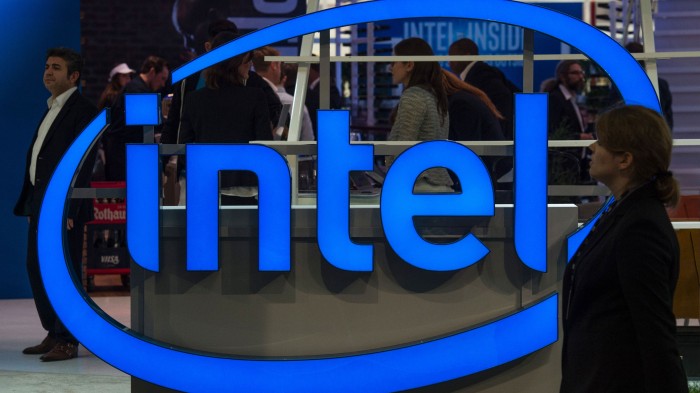Intel Puts the Brakes on Moore’s Law
Chip maker Intel has signaled a slowing of Moore’s Law, a technological phenomenon that has played a role in just about every major advance in engineering and technology for decades.
Since the 1970s, Intel has released chips that fit twice as many transistors into the same space roughly every two years, aiming to follow an exponential curve named after Gordon Moore, one of the company’s cofounders. That continual shrinking has helped make computers more powerful, compact, and energy-efficient. It has helped bring us smartphones, powerful Internet services, and breakthroughs in fields such as artificial intelligence and genetics. And Moore’s Law has become shorthand for the idea that anything involving computing gets more capable over time.
But Intel disclosed in a regulatory filing last month that it is slowing the pace with which it launches new chip-making technology. The gap between successive generations of chips with new, smaller transistors will widen. The transistors in Intel’s latest chips already have features as small as 14 nanometers, and it is becoming more difficult to shrink them further in a way that's cost-effective for production.

Intel’s strategy shift is not a complete surprise. It already pushed back the debut of its first chips with 10-nanometer transistors from the end of this year to sometime in 2017. But it is notable that the company has now admitted that wasn’t a one-off, and that it can’t keep up the pace it used to. That means Moore’s Law will slow down, too.
That doesn’t necessarily mean that our devices are about to stop improving, or that ideas such as driverless cars will stall from lack of processing power. Intel says it will deliver extra performance upgrades between generations of transistor technology by making improvements to the way chips are designed. And the company’s chips are essentially irrelevant to mobile devices, a market dominated by competitors that are generally a few years behind in terms of shrinking transistors and adopting new manufacturing technologies. It is also arguable that for many important new use cases for computing, such as wearable devices or medical implants, chips are already powerful enough and power consumption is more important.
But raw computing power still matters. Putting more of it behind machine-learning algorithms has been crucial to recent breakthroughs in artificial intelligence, for example. And Intel is likely to have to deliver more bad news about the future of chips and Moore’s Law before too long.
The company’s chief of manufacturing said in February that Intel needs to switch away from silicon transistors in about four years. “The new technology will be fundamentally different,” he said, before admitting that Intel doesn’t yet have a successor lined up. There are two leading candidates—technologies known as spintronics and tunneling transistors—but they may not offer big increases in computing power. And both are far from being ready for use in making processors in large volumes.
(Read more: AnandTech, “Intel: Chips Will Have to Sacrifice Speed Gains for Energy Savings”)
Deep Dive
Computing
How ASML took over the chipmaking chessboard
MIT Technology Review sat down with outgoing CTO Martin van den Brink to talk about the company’s rise to dominance and the life and death of Moore’s Law.
How Wi-Fi sensing became usable tech
After a decade of obscurity, the technology is being used to track people’s movements.
Algorithms are everywhere
Three new books warn against turning into the person the algorithm thinks you are.
Stay connected
Get the latest updates from
MIT Technology Review
Discover special offers, top stories, upcoming events, and more.